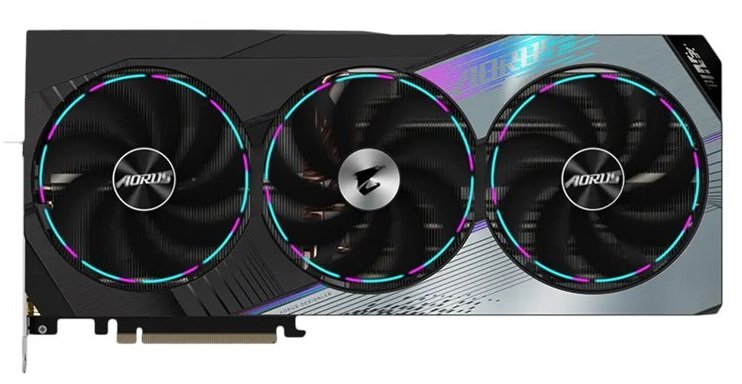Introduction to TechPowerUp 3060 Mobilr
When it comes to choosing a powerful GPU for gaming or productivity tasks, Nvidia’s RTX 3060 is one of the most popular choices for both desktop and mobile devices. The RTX 3060 offers excellent price-to-performance, but the experience you get from a desktop versus a laptop can vary significantly. TechPowerUp 3060 Mobilr comprehensive comparison between the RTX 3060 mobile and desktop versions sheds light on the differences between these two variants, helping consumers understand which one is the best choice for their needs.
In this article, we’ll delve into the detailed specifications, performance benchmarks, pricing, and more to provide a full understanding of TechPowerUp 3060 Mobilr findings. Whether you’re a gamer, content creator, or professional, knowing the differences between the mobile and desktop RTX 3060 versions is crucial for making an informed decision.
Understanding the Key Differences Between Mobile and Desktop GPUs
Before diving into the specifics, it’s important to grasp the core difference between mobile and desktop GPUs. Desktop GPUs, like the RTX 3060, are larger, more powerful, and capable of utilizing higher power limits. They are designed for full-sized desktops with advanced cooling systems, giving them the ability to sustain higher performance levels.
On the other hand, mobile GPUs are adapted to fit the compact and power-constrained environments of laptops. While they bear the same name and architecture as their desktop counterparts, they are typically clocked lower and operate with less power to manage heat and battery consumption. For consumers, these differences translate into varied experiences depending on their intended use case—whether you’re looking for portability or raw power.
RTX 3060 Mobile vs. Desktop: Specifications Comparison
Mobile RTX 3060 Specifications
The RTX 3060 mobile GPU is designed to operate within the confines of a laptop’s thermal and power limits. Its TDP (Thermal Design Power) ranges between 60W and 115W, depending on the laptop’s cooling capabilities. This variation in power affects its clock speeds and overall performance.
- CUDA Cores: 3840
- Base Clock: 900 MHz – 1387 MHz (depending on TDP)
- Boost Clock: 1283 MHz – 1703 MHz
- VRAM: 6 GB GDDR6
- Memory Bus: 192-bit
Desktop RTX 3060 Specifications
The desktop version of the RTX 3060 is built for maximum performance with fewer constraints. With a higher power limit of 170W, it delivers better-sustained performance in demanding tasks.
- CUDA Cores: 3584
- Base Clock: 1320 MHz
- Boost Clock: 1777 MHz
- VRAM: 12 GB GDDR6
- Memory Bus: 192-bit
Comparing Clock Speeds and Power
One of the most noticeable differences is the clock speeds. The desktop RTX 3060 operates at higher base and boost clock speeds, leading to better performance in most scenarios. Additionally, the desktop variant has more VRAM (12 GB) compared to the mobile version (6 GB), which plays a crucial role in memory-intensive tasks like 4K gaming or 3D rendering.
Performance Benchmarks: Mobile vs. Desktop
Gaming Benchmarks
When it comes to gaming, the desktop RTX 3060 has a clear advantage. Benchmarks conducted by TechPowerUp 3060 Mobilr on titles such as Cyberpunk 2077, Call of Duty: Warzone, and Assassin’s Creed Valhalla show the desktop version outperforming the mobile variant by an average of 20-30% across different resolutions. At 1080p, both GPUs perform admirably, but when moving up to 1440p or 4K, the desktop RTX 3060 maintains higher frame rates, especially in demanding titles with ray tracing enabled.
Synthetic Benchmarks
In synthetic benchmarks like 3DMark’s Time Spy, the desktop RTX 3060 consistently scores higher. For example, the desktop version scores around 10,000 points, while the mobile version scores closer to 7,500 points. This difference highlights how the desktop GPU can sustain higher performance levels thanks to its increased power limit and better cooling solutions.
Real-World Usage
For real-world tasks like video rendering, multitasking, and graphic design, the desktop RTX 3060 outpaces the mobile version. Tasks that benefit from sustained high performance, such as 4K video editing or 3D modeling in Blender, are completed faster on the desktop GPU, making it the better choice for professionals who need maximum output.
Power Consumption and Thermal Management
Power Limits
One of the major constraints for the mobile RTX 3060 is its power consumption. With a TDP range between 60W and 115W, mobile GPUs are designed to balance performance and battery life. Lower power limits mean that the mobile GPU cannot perform at the same level as the desktop variant, which has a higher TDP of 170W.
Thermal Throttling
Laptops with the TechPowerUp 3060 Mobilr are more susceptible to thermal throttling. As the temperature rises, the GPU reduces its clock speed to prevent overheating. This impacts performance, especially during extended gaming sessions or high-intensity tasks like video rendering. Desktops, on the other hand, have larger, more efficient cooling systems that help maintain higher performance without throttling.
Battery Life Considerations
For laptops, battery life is a critical factor. Running the RTX 3060 mobile on battery power severely limits performance as the GPU operates at a fraction of its potential to conserve energy. For gamers and creators on the go, this is an important consideration—high performance often requires the laptop to be plugged in.
Build and Design: Mobile Laptops vs. Desktop Setups
Cooling Solutions
One of the key differences between mobile and desktop GPUs lies in the cooling solutions. Laptops have compact cooling systems that limit how much heat they can dissipate, affecting the performance of the TechPowerUp 3060 Mobilr. In contrast, desktop GPUs have larger heatsinks and more efficient fans, which allow them to run at higher clock speeds without overheating.
Portability vs. Power
While the mobile RTX 3060 offers portability and convenience, it comes with compromises. Laptops with the RTX 3060 are compact and easy to carry, making them great for on-the-go users. However, desktops are bulkier but provide significantly more power, upgradability, and longevity in terms of performance.
Gaming Performance: Which RTX 3060 Suits Gamers Better?
When comparing the TechPowerUp 3060 Mobilr and desktop versions, gaming performance is one of the most critical factors for users. Whether you’re a casual gamer or a hardcore enthusiast, understanding how each version performs in gaming scenarios is essential.
Frame Rates and Graphical Settings Comparison
The desktop RTX 3060 consistently outperforms the mobile version across a variety of games, especially when playing at higher resolutions and graphical settings. In games like Cyberpunk 2077 and Assassin’s Creed Valhalla, the desktop version can push higher frame rates at ultra settings, making it the go-to choice for gamers who want the best visual experience without sacrificing performance.
- 1080p Performance: At 1080p, both the mobile and desktop TechPowerUp 3060 Mobilr can deliver high frame rates, often exceeding 60 FPS in most AAA games. However, the desktop variant still holds a 15-25% advantage, which becomes more noticeable when enabling features like ray tracing or DLSS (Deep Learning Super Sampling).
- 1440p and 4K Performance: As the resolution increases, the gap between the mobile and desktop RTX 3060 widens. While the mobile version struggles to maintain high frame rates at 1440p with ray tracing, the desktop RTX 3060 manages to push smoother gameplay at higher settings. At 4K, the desktop RTX 3060 offers a more consistent experience, although both versions may need to drop down to medium settings for a playable frame rate.
Resolution and Future-Proofing
The desktop RTX 3060’s additional power and VRAM (12 GB vs. 6 GB) make it a more future-proof choice, especially for gamers planning to upgrade to higher resolutions or more demanding games in the future. The mobile version, while still capable of playing modern titles at 1080p, may show its limits sooner as game developers push for more visually complex environments and higher textures.
RTX 3060 in Content Creation: Mobile vs. Desktop
While the RTX 3060 is well-known for its gaming prowess, it also excels in content creation tasks like video editing, 3D rendering, and graphic design. For creators looking to choose between the mobile and desktop versions of the RTX 3060, performance in software like Adobe Premiere Pro, Blender, and Photoshop is a key factor.
Rendering and Video Editing
The desktop RTX 3060’s higher power limit and increased VRAM provide a significant advantage in rendering tasks. Whether you’re working with high-resolution video in Premiere Pro or creating complex 3D models in Blender, the desktop version can handle these tasks faster and more efficiently. The additional 6 GB of VRAM is particularly beneficial for handling larger projects, allowing for smoother previews and faster rendering times.
In contrast, the mobile TechPowerUp 3060 Mobilr performs well in lighter tasks but may struggle with larger projects, especially those requiring extensive GPU resources. For creators who work on the go, the mobile version offers convenience, but when it comes to handling demanding workloads, the desktop RTX 3060 stands out.
Multitasking and GPU Acceleration
Many creative professionals rely on multitasking—editing video, running rendering jobs, and using other applications simultaneously. The desktop RTX 3060’s better thermal management and higher core clocks allow it to maintain performance across multiple tasks without throttling. In laptops, however, multitasking can lead to thermal constraints, especially during GPU-intensive tasks, causing the mobile RTX 3060 to throttle and slow down under heavy loads.
Pricing: Is the Desktop or Mobile RTX 3060 a Better Value?
When choosing between the RTX 3060 mobile and desktop versions, pricing is a critical factor for many consumers. Both GPUs offer great performance at their respective price points, but understanding the overall value requires considering the entire package, including the cost of the device, cooling solutions, peripherals, and upgradability.
Price-to-Performance Ratio
The desktop RTX 3060 offers a better price-to-performance ratio when looking at raw performance. For a typical desktop RTX 3060 build, you’ll get more power, more VRAM, and better upgradability options for a lower overall cost compared to a laptop with an RTX 3060. On the desktop side, you can build or purchase a prebuilt system that includes the RTX 3060 and other high-performance components, while laptops with the same GPU are often priced higher due to the compact design, portability, and additional hardware required to fit powerful components in a smaller chassis.
- Desktop GPU Cost: Around $300-350 (for the GPU alone), with full PC builds ranging from $1,000-$1,500 depending on other components.
- Laptop with RTX 3060: Typically priced between $1,200 and $1,800, depending on specifications such as CPU, RAM, and screen quality.
Additional Costs
While laptops come as all-in-one devices, desktop setups often require additional purchases, such as a monitor, keyboard, and mouse. However, desktops offer more flexibility in terms of upgrades and repairs, which can lead to long-term savings. With laptops, you are generally locked into the hardware configuration, making it harder to improve performance without buying a new device entirely.
For gamers and professionals on a budget, the desktop RTX 3060 offers better overall value, especially if you already own peripherals like a monitor and input devices.
Upgradability: Mobile RTX 3060 vs. Desktop Version
One of the key considerations when choosing between a laptop and a desktop is the potential for future upgrades. Desktops are well-known for their modularity and upgradability, whereas laptops are often limited in this regard.
Upgrading a Desktop RTX 3060
With a desktop, the RTX 3060 can be easily swapped out for a more powerful GPU in the future, making it a highly upgradable option. In addition to GPU upgrades, desktops allow users to upgrade other components like the CPU, RAM, storage, and cooling system. This flexibility ensures that a desktop RTX 3060 build can remain relevant for several years with incremental upgrades, making it a better long-term investment for those who want to stay up to date with the latest hardware.
Upgrading a Laptop GPU
In contrast, upgrading the GPU in a laptop is typically not possible. Most modern laptops, especially those with dedicated GPUs, have soldered components, meaning that you can’t simply remove the RTX 3060 mobile and replace it with a more powerful model. While some gaming laptops may allow upgrades to RAM or storage, the GPU remains fixed, limiting the device’s future potential.
For users who prioritize future-proofing and upgradability, the desktop RTX 3060 is the clear winner. Laptops, while convenient, offer far less flexibility in terms of performance upgrades.
Battery Life and Portability: A Deeper Look
The Importance of Battery Life for Mobile Gamers
One of the main selling points of laptops is portability. Being able to take your gaming or creative work with you on the go is a major benefit of choosing a laptop with the TechPowerUp 3060 Mobilr. However, battery life becomes a crucial factor in this equation.
When running demanding tasks, especially games or rendering software, the mobile RTX 3060 requires significant power. This leads to rapid battery drain, often limiting gaming sessions to just an hour or two without being plugged in. To conserve battery life, many laptops will reduce the GPU’s performance when running on battery, which can significantly impact gaming and rendering quality.
Performance on the Go vs. Plugged-In Performance
For mobile gamers or creators who spend a lot of time traveling, the trade-off between battery life and performance can be frustrating. While laptops provide the convenience of mobility, they do not offer the same consistent performance as a desktop setup unless they are plugged into a power source. This means that for many users, the mobile RTX 3060 may only provide its full potential when stationary and connected to power, reducing the benefit of portability during high-performance tasks.
On the other hand, a desktop is built for stationary use, but when considering raw power, thermal management, and performance, it surpasses the mobile version in every category. If portability is not a primary concern, the desktop RTX 3060 offers a much more robust gaming and productivity experience.
Software Support and Driver Updates
Another factor to consider is the software ecosystem that supports both mobile and desktop GPUs. Nvidia provides regular driver updates for both versions of the RTX 3060, but there are some subtle differences in how these updates impact mobile vs. desktop users.
Driver Optimization
Both the mobile and desktop versions of the RTX 3060 receive Nvidia’s Game Ready drivers, which optimize performance for the latest titles. However, because mobile versions of GPUs need to balance power consumption, thermal limits, and performance, driver updates may have different impacts. Desktop GPUs generally see more substantial performance boosts from new drivers due to their higher power ceilings and more efficient cooling solutions.
Software Optimization for Productivity
For creators using the RTX 3060 for tasks beyond gaming, driver updates and software optimization are just as crucial. Nvidia’s Studio Drivers are designed to enhance performance in creative applications like Adobe Premiere Pro, Blender, and DaVinci Resolve. Both mobile and desktop RTX 3060 GPUs benefit from these drivers, but again, the desktop version’s better thermal headroom allows for more consistent performance during extended creative sessions.
The Future of Mobile vs. Desktop GPU Performance
Looking ahead, the competition between mobile and desktop GPUs, particularly in the RTX 3060 category, will continue to evolve. As technology advances, Nvidia and other GPU manufacturers are working to close the performance gap between mobile and desktop versions of their GPUs, but there are still significant challenges when it comes to power consumption and heat dissipation in portable devices.
Emerging Trends in GPU Technology
Nvidia’s innovations in GPU architecture, like the Ada Lovelace architecture and deep learning technologies, aim to bring more power-efficient designs into future mobile GPUs. We can expect mobile versions of GPUs to incorporate enhanced power management features, further improving battery life without sacrificing as much performance. Ray tracing, AI-driven optimizations like DLSS (Deep Learning Super Sampling), and machine learning are also becoming more common in both mobile and desktop GPUs, enhancing visual fidelity and performance across platforms.
While future mobile GPUs will undoubtedly improve, desktop GPUs are also advancing at a rapid pace. Upcoming generations of desktop GPUs will likely continue to dominate in terms of raw power, with higher CUDA core counts, faster clock speeds, and enhanced cooling systems. This constant progress in desktop GPU technology ensures that desktops will remain the powerhouse for gamers and content creators who need the best possible performance.
What the Future Holds for RTX 3060 Successors
The RTX 3060’s success in both mobile and desktop markets suggests that Nvidia will continue to refine its mid-range offerings. We can anticipate future mobile GPUs that push the boundaries of power efficiency, possibly integrating newer cooling techniques like vapor chambers or liquid cooling in high-end gaming laptops. Meanwhile, desktop GPUs will continue to offer better upgradability and peak performance, making them ideal for users who want to future-proof their setup.
For users deciding between the mobile and desktop RTX 3060 today, the choice hinges on whether they prioritize mobility or top-tier performance. Both markets are evolving quickly, but desktops are likely to maintain their edge for users who require the best performance for gaming, 3D rendering, and other demanding applications.
Who Should Choose the Mobile RTX 3060?
The mobile RTX 3060 is an appealing option for a specific set of users who need a combination of performance and portability. While it cannot compete with the desktop version in raw power, it provides a well-balanced solution for those who prioritize mobility.
Ideal Users for Mobile RTX 3060
- Gamers on the Go: If you frequently travel or need a laptop for both work and gaming, the mobile RTX 3060 offers decent gaming performance while providing the convenience of portability. It’s a great option for gamers who value being able to take their setup wherever they go, without being tied down to a desktop rig.
- Students and Professionals: Many students or professionals who dabble in gaming but need a laptop for other tasks, such as taking notes, attending classes, or working remotely, can benefit from the mobile RTX 3060. Laptops with this GPU offer a good mix of work and play, handling productivity tasks with ease while also being capable of running modern games.
- Content Creators on the Move: For content creators who work remotely or travel often, a laptop with an RTX 3060 mobile is an excellent tool. While it may not handle intensive 4K rendering as well as a desktop, it provides enough power for on-the-go video editing, graphic design, and other creative tasks.
Use Cases for Mobile RTX 3060
- Portability: Users who frequently move between locations, like digital nomads or professionals who travel for work, will appreciate the convenience of a laptop without the need to sacrifice too much gaming or creative performance.
- Budget-Friendly: For those who need both a laptop and a gaming rig, a laptop with the RTX 3060 can serve both purposes, potentially saving money compared to purchasing a separate gaming desktop and work laptop.
In summary, if portability, versatility, and decent gaming performance are more important to you than absolute power, the mobile RTX 3060 is a fantastic choice.
Who Should Choose the Desktop RTX 3060?
While the mobile RTX 3060 has its advantages, the desktop version is the better option for users who need maximum performance, flexibility, and upgradability. It caters to enthusiasts, professionals, and gamers who demand the best experience possible without the limitations of a mobile device.
Ideal Users for Desktop RTX 3060
- Hardcore Gamers: If you prioritize high frame rates, ultra settings, and the best possible performance in demanding games, the desktop TechPowerUp 3060 Mobilr is a clear choice. It delivers more consistent performance, especially at higher resolutions like 1440p or 4K, making it the best option for gamers with a powerful setup.
- Content Creation Professionals: Creators working in fields like video production, 3D animation, and graphic design will find that the desktop RTX 3060 handles larger workloads more efficiently. Its additional VRAM and superior cooling allow it to tackle demanding tasks, from 4K video editing to complex 3D modeling, with fewer bottlenecks.
- Enthusiasts and DIY Builders: For PC enthusiasts who enjoy customizing their rig, the desktop RTX 3060 offers unparalleled flexibility. Whether you’re upgrading from an older GPU or building a new system from scratch, the desktop version’s ease of upgradability ensures your setup remains future-proof and adaptable to new technologies.
Use Cases for Desktop RTX 3060
- High-Resolution Gaming: If you play at higher resolutions like 1440p or 4K, the desktop RTX 3060’s additional power will provide a better gaming experience with smoother frame rates and the ability to use ray tracing without significant performance dips.
- Upgradability: The ability to swap out the GPU, upgrade other components, and use more advanced cooling systems makes the desktop RTX 3060 ideal for users who want a system that can evolve with their needs over time.
In conclusion, the desktop RTX 3060 is the right choice for users who value performance above all else and are looking for a long-term investment in a high-power gaming or content creation setup.
Conclusion
TechPowerUp 3060 Mobilr comparison of the RTX 3060 mobile and desktop versions highlights the key differences between these two GPUs. The mobile RTX 3060 is a versatile option for users who need portability and decent performance in a compact package, while the desktop RTX 3060 delivers superior power, flexibility, and upgradability.
Choosing between the two depends largely on your priorities. If you value mobility, the ability to game or create content on the go, and a more compact, all-in-one system, then the mobile RTX 3060 is an excellent choice. However, if performance is your primary concern—especially for gaming at high resolutions, content creation, or future-proofing your setup—then the desktop TechPowerUp 3060 Mobilr is the better option.
Ultimately, both versions of the RTX 3060 are capable of delivering a great experience, but understanding your specific needs will help you make the best choice.
FAQs
1. Is the desktop RTX 3060 better for gaming than the mobile version?
Yes, the desktop RTX 3060 outperforms the mobile version in gaming, especially at higher resolutions like 1440p or 4K. The desktop version has higher clock speeds, more power, and better thermal management, resulting in smoother gameplay and higher frame rates.
2. Can I upgrade the GPU in a laptop with an RTX 3060 mobile?
In most cases, no. Laptops generally have the GPU soldered onto the motherboard, making it impossible to upgrade. Desktops, however, allow for easy GPU upgrades, which is a major advantage for future-proofing your system.
3. How does battery life impact the RTX 3060 mobile performance?
When running on battery, laptops with the RTX 3060 mobile significantly reduce performance to conserve power. For gaming or intensive tasks, you’ll need to keep the laptop plugged in to get the full potential of the GPU.
4. Is the RTX 3060 desktop version future-proof?
The desktop RTX 3060 is a solid mid-range GPU with enough power to handle most modern games and creative tasks. It is upgradable and supports newer technologies like ray tracing and DLSS, making it relatively future-proof for several years, depending on your performance needs.
5. Which is better for content creation: RTX 3060 mobile or desktop?
For demanding content creation tasks, the desktop RTX 3060 is the better option due to its higher power limit, better cooling, and increased VRAM (12 GB vs. 6 GB). This allows it to handle larger projects, such as 4K video editing and 3D rendering, more efficiently than the mobile version.
Also, Read, RS 125 Only on TheSparkShop.in Batman Style Wireless BT Earbuds.




